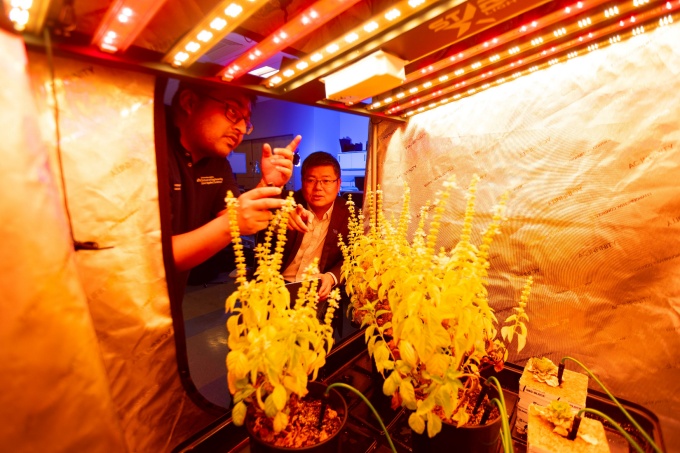Here is how we advance AI for social good
Five ways that UB is leading the AI revolution

The University at Buffalo has more than 200 faculty at work on projects that use AI to improve health care, agriculture, infrastructure, national defense and more.
In the 1990s, a team of UB computer scientists delivered one of the first practical success stories of artificial intelligence: development of a handwriting recognition system for the United States Postal Service. The technology, at the time cutting-edge, has saved the agency billions of dollars in operational costs.
Now, decades later, UB researchers continues to push both the capabilities and the applications of AI. Through several AI-focused initiatives—including serving as the new home of New York State's $400 million Empire AI consortium—UB is collaborating with partners within the state and around the world, all with a singular aim of solving societal challenges both large and small. Projects currently underway include:
Monitoring wounds with AI-powered smartphones
Patients may soon be able to monitor their chronic wounds from the comfort of their homes using a smartphone powered by AI tools developed at UB. The research may benefit over 8 million Americans who suffer from chronic wounds that stem from a multitude of conditions, including diabetes and major surgery.
Lead investigator: Wenyao Xu, professor, Department of Computer Science and Engineering
Supported by: National Institutes of Health
Indoor farming takes root with AI
Lettuce and basil grow inside a small greenhouse under the unflinching eyes of an AI system designed to optimize LED lighting and rapidly identify early signs of nutrient deficiencies, pests and other problems among the plants. The technology may solve indoor farming's costly challenge of monitoring plant health.
Lead investigator: Jinjun Xiong, SUNY Empire Innovation Professor, Department of Computer Science and Engineering
Supported by: FuzeHub
Protecting power grids with AI
A UB-developed AI model may help electrical grids prevent power outages by automatically rerouting electricity in milliseconds. The AI technology quickly detects and repairs problems, allowing power grids to "self-heal" without human intervention, which could take from minutes to hours to resolve.
Lead Investigator: Souma Chowdhury, associate professor, Department of Mechanical and Aerospace Engineering
Supported by: U.S. Office of Naval Research and National Science Foundation
Securing AI to accelerate national security
UB researchers are partnering with security firm HiddenLayer to secure AI models utilized by the U.S. Department of Defense that may be vulnerable to attack. The AI models are used in a range of applications, from classifying images to identifying fraud.
Lead investigator: Siwei Lyu, SUNY Empire Innovation Professor, Department of Computer Science and Engineering
Supported by: Air Force Research Laboratory
Diagnosing disease using AI
UB researchers are harnessing the power of AI to help doctors better diagnose disease when reviewing medical images, such as X-rays and ultrasounds. The AI tools are designed to detect subtle signs in medical imaging, helping physicians catch life-threatening diseases early.
Lead Investigator: Mingchen Gao, assistant professor, Department of Computer Science and Engineering
Supported by: National Science Foundation CAREER Award
